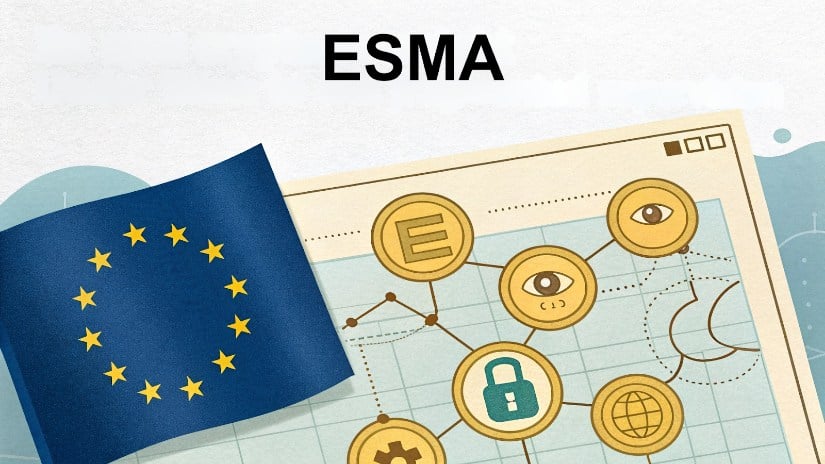The European Union is preparing to revise the way it oversees cryptocurrency companies. The plan would transfer the surveillance of individual countries to a single regulator across the EU, the European Securities and Markets Authority (ESMA).
This decision aroused a debate in the 27 member states of Europe.
The president of ESMA, Verena Ross, confirmed that the European Commission wrote proposals to move the supervision of the cryptography of national regulators at ESMA. The objective is to solve the problems caused by the various supervisors in each country apply the same rules.
“This would provide key momentum to have a crucial market in Europe which is more integrated and worldwide,” Ross told Financial Times.
The problem with current supervision
EU markets regulations in crypto-sets (Mica) became fully effective in December 2024. He created uniform rules for cryptographic companies across Europe. However, each country still issues licenses and oversees companies independently.
Marina Markezic of the European Crypto initiative explains the question: having 27 different national authorities supervising the same regulation creates problems. This fragmented approach is likely to undermine Mica’s main objective to create coherent rules across Europe.
Ross pointed out that each of the 27 EU countries was to constitute their own expertise and surveillance teams from zero. “New specific resources have had to be accumulated 27 times, once in each Member State, which could have been done more effectively at European level,” she said.

Source: @ESMACOMMS
The current system has already shown cracks. In July 2025, ESMA criticized the Malta process to approve cryptographic companies. The examination revealed that Malta granted licenses while problems of risk importance did not remain unresolved, including governance and cybersecurity problems.
Change
France, Italy and Austria are growing hard for ESMA to take direct control of the supervision of large cryptography companies. These countries fear that without central supervision, companies will go around the easiest place to be approved.
The head of the financial regulator of France called to transfer surveillance to ESMA to ensure coherent supervision across Europe. France has even suggested that it could block the cryptographic licenses granted by other EU countries if the standards are not aligned.
The EU Commissioner for Financial Services Maria Luís Albuquerque supported the idea. She confirmed that the EU assesses an official proposal to transfer scholarships, cryptographic platforms and other cross -border entities at ESMA.
Opposition from small countries
Not everyone agrees with the plan. Malta, Luxembourg and Ireland have rejected to give Esma more power.
Malta’s financial financial authority of financial services has published a declaration saying that centralization “would introduce only an additional layer of bureaucracy, which could hinder efficiency during a period when the EU actively strives to improve its competitiveness”.
This opposition is not surprising. Malta has become a hub for the crypto license, granting permits to major exchanges like OKX and Crypto.com. In July 2025, Malta had issued at least five CASP licenses (provider of cryptographic asset services) under Mica, making it one of the first movers in Europe.
Claude Marx, who directs the Luxembourg financial regulator, warned that the centralization of all power at ESMA could create a regulatory “monster”. Luxembourg, like Malta, has built a flourishing sector of financial services and fears to lose its competitive advantage.
How is the mica currently
As part of the Mica, cryptographic companies can obtain a license in an EU country, then operate in the 27 Member States. This “passport” system was supposed to make things easier for businesses.
However, the system has created tensions. Some countries fear that companies choose jurisdictions with more loose surveillance to obtain quick approvals, then using their licenses to operate everywhere in Europe.
The Netherlands quickly took place on licenses, becoming one of the first countries to grant mica approvals to companies like Moonpay and Bitstaete. Ireland has also issued licenses to major players like Coinbase and Kraken.
Different countries also manage the transition period differently. France allows 18 months old companies to become fully in conformity, while the Netherlands only give them six months. This inconsistency adds to confusion.
What happens next
ESMA was created in 2011 after the 2008 financial crisis to harmonize financial rules across Europe. When Mica was designed for the first time, the original plan was to give central ESMA surveillance. This idea was abandoned on concerns as to whether ESMA had the ability to manage it.
Now the conversation has returned. Ross stressed that Europe needs more solid capital markets to finance priorities such as defense, clean energy and digital infrastructure. She thinks that centralized supervision is necessary to achieve these objectives.
Any modification of the supervision structure would require an agreement between the EU member states. Given the strong opposition of Malta, Luxembourg and Ireland, reaching a consensus will not be easy.
ESMA is already preparing to assume new responsibilities. From 2026, he supervised data systems on stocks and prices of bonds and ESG ratings. These smaller steps could pave the way for wider supervision powers.
The debate highlights a fundamental question on how Europe should regulate crypto: should surveillance be centralized for coherence, or should countries maintain autonomy to compete and innovate?
The upcoming road
For cryptographic companies, the issues are high. A single centralized supervisor could mean more coherent rules and easier compliance. But this could also mean stricter monitoring and higher costs, especially for small businesses.
Ross noted that “the demand for the decomposition of obstacles has increased level” given the economic challenges of Europe. It remains to be seen if this request results in real reform.
The European Commission is currently writing proposals. No official calendar has been announced when these changes could take effect, but discussions are actively underway at the highest levels of the development of EU policies.




